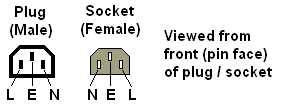bluenote56
Well-known member
Hello,
i´ve tried to figure out the correct Mains Polarity for my Summits. Although I was able to to this for any of my other components by listening and verifying through measurements, I´ve failed this time.
There are slight differences when turning the IEC Plug 180 degrees. If you look at the backside mains connector (which is upside-down) the right pin sounds warm and voices have a very full timbre. But stage is not as defined as if the mains phase runs into the left pin.
Measurements (leak voltage to ground potential) fail, because the power supply obviously switches only with music signal.
What is your expierience and how did you connect mains? Are there any methods to figure that out by means of a voltmeter?
Br
Johann
i´ve tried to figure out the correct Mains Polarity for my Summits. Although I was able to to this for any of my other components by listening and verifying through measurements, I´ve failed this time.
There are slight differences when turning the IEC Plug 180 degrees. If you look at the backside mains connector (which is upside-down) the right pin sounds warm and voices have a very full timbre. But stage is not as defined as if the mains phase runs into the left pin.
Measurements (leak voltage to ground potential) fail, because the power supply obviously switches only with music signal.
What is your expierience and how did you connect mains? Are there any methods to figure that out by means of a voltmeter?
Br
Johann





